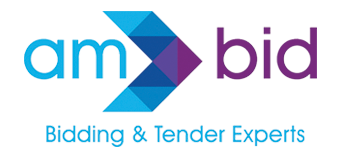As the world grows more connected and demographics shift, there is an ever-increasing expectation on businesses to demonstrate diversity and inclusiveness, in their workplace, their supply chain, and in how they interact with their end users.
Study after study demonstrates that diversity is a good thing, driving creativity and innovation in decision-making, boosting productivity and creating greater opportunities for professional growth. But diversity is not the same thing as inclusion and businesses that fail to provide both risk shrinking their workforce and customer base.
Obviously, any reasonable business owner wants to believe that they run an inclusive company, free from discrimination – even still, it can be hard for a bidder to know how to demonstrate this in a meaningful way, particularly within a tender submission.
A brief primer
The Equality Act 2010 tied over 116 separate pieces of legislation together into a single Act and set out how individuals should experience equality of opportunity. In particular, the Act established nine characteristics through which workers were protected from discrimination. These being:
- age
- disability
- gender reassignment
- marriage and civil partnership
- pregnancy and maternity
- race
- religion or belief
- sex
- sexual orientation
Under the Equality Act, employers have a responsibility to ensure that no employee is subject to discrimination based on these – including harassment or victimisation – and to make reasonable adjustments to remove barriers that could hamper an individual’s ability to do their job well.
The persistent challenge
Straightforward enough, but 2010 was over a decade ago, and how we think and talk about diversity has shifted. In fact, one reason companies might struggle to talk about diversity and inclusion is because the scope of what is “included” is by its very nature continually expanding.
For instance, beyond the nine protected characteristics, employers have started to have to consider how they are protecting and accommodating workers from different socio-economic backgrounds, including ex-offenders, neurodivergent individuals such as those on the autism spectrum, or those outside the gender-binary.
These changes can be the result of policy makers and advocates pushing for it, like the recent drive to get more women and minorities into STEM fields or how the #MeToo and BLM movements have reinvigorated discussion of sexism and racism in the workplace, however just as often circumstances dictate the conversation.
The pandemic necessitated a massive shift to home working, enabling a greater section of the population (older people, young mothers, those with impaired motor functions) to remain in work. This is inarguably a good thing, but it raises new questions, such as whether an employer is obliged to pay for broadband in order to allow those individuals to continue to work.
Consider as well how language changes; for instance, the term BAME – short for Black, Asian and Minority Ethnic – was once fairly commonplace but is now less used, largely because it is not particularly useful to the conversation around race, artificially combining disparate ethnicities and ignoring others.
Creating an inclusive workplace
It can feel like you’re continually trying to catch-up, and that may be true in some respects, but inclusivity isn’t something you have, rather its something you aspire to be. It is an ongoing journey. In this respect, your first step should be to create a Diversity and Equality policy if you don’t have one already.
Resist the urge to copy an online template and use the opportunity to talk to your staff and ensure everyone across the whole enterprise understands what is meant by equality, diversity and inclusion and why it matters to the organisation. It is important to ensure you get as many perspectives as you can, both to ask the questions you might miss, and to create buy-in at multiple levels throughout the organisation.
Name someone within your organisation to be responsible to keep the policy upheld and maintained and empower them to identify areas of concern or and make the changes to resolve them. Equally important, include a provision within the policy to investigate and resolve instances of discrimination, bullying, or harassment, and then follow through on it.
Beyond this, there are now many Diversity and Inclusivity specialist consultants who offer diversity diagnostics, change management support, strategic interventions, training, etc. to give you a better grasp on your workforce, supply chain, and customer base and identify areas for positive change.
Inclusivity and diversity training courses, covering things such as inclusive language and sensitivity training, to name a few are definitely useful, however training on its own is just an intervention, so you should ensure you take those learnings and embed what works into your systems and processes.
What next?
Being able to point to your inclusivity assessments or a recent diversity training course from a specialist consultant will undoubtedly make you stand out from your competitors in a bid submission. However, the wider benefit to taking account of your inclusivity is that it can help your organisation to develop a better vocabulary to talk about these issues, the steps you have taken to provide for your employees and the steps still to take.
Beyond that, like any other team, a Bid Team that is diverse and inclusive is more receptive to new ideas, can ask better questions of your Subject Matter Experts, and take a more innovative approach to finding solutions, which equals more business in the long-term.
This article is based on an interview with Paul Skovron, Managing Director of 3In Consulting – Diversity & Inclusion specialists. For more information, go to: https://3inconsulting.co.uk/

